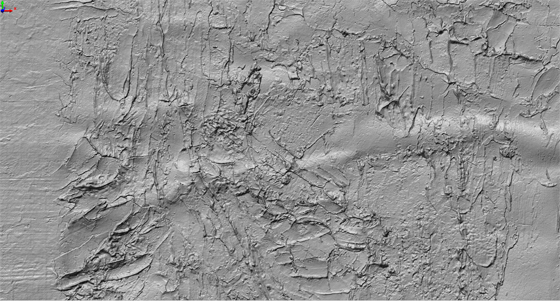This research project, carried out in collaboration with Dr. Christina Young, involved the 3D scanning of several paintings as examples of different techniques and supports. The first painting, a work by German expressionist painter E. L. Kirchner (92.3 x 72 cm, thick oil paint on paper) was recorded in July 2014 by Carlos Bayod and Arthur Prior to understand, assist in the adherence of the work to a flat support without deforming the impasto. The Lucida scanning application allows the user to view 3D data as a rendered image, in order to compare it with other layers of 2D information such as color, X-ray, infrared, etc. The recorded data can also be exported to different 3D formats like STL or OBJ.



Details of the 3D data of the Kirchner painting in STL format.
One of the most exciting tests within this research project will be the systematic high-resolution recording of the surface of a large Poplar panel under varying RH (relative humidity) and temperature conditions. The 3D data obtained with the Lucida scanner will make possible to measure and monitor the deformation of the panel as the conditions change. This information will assist Christina Young in her ongoing research.




